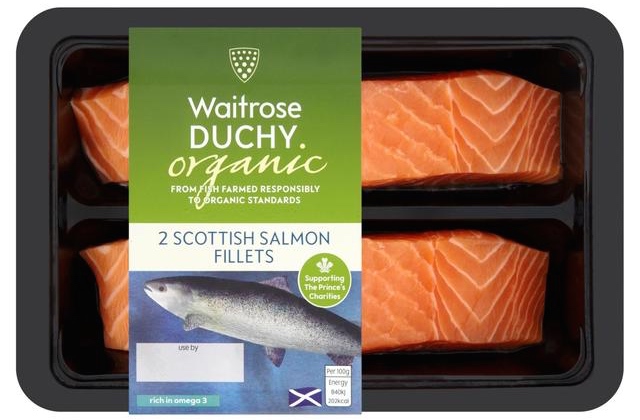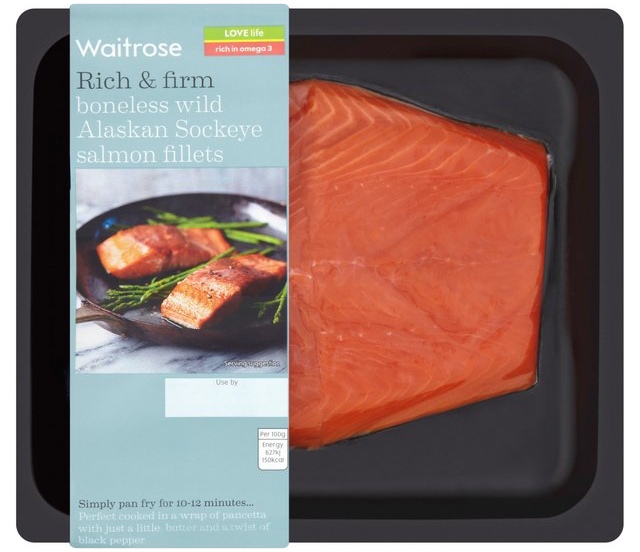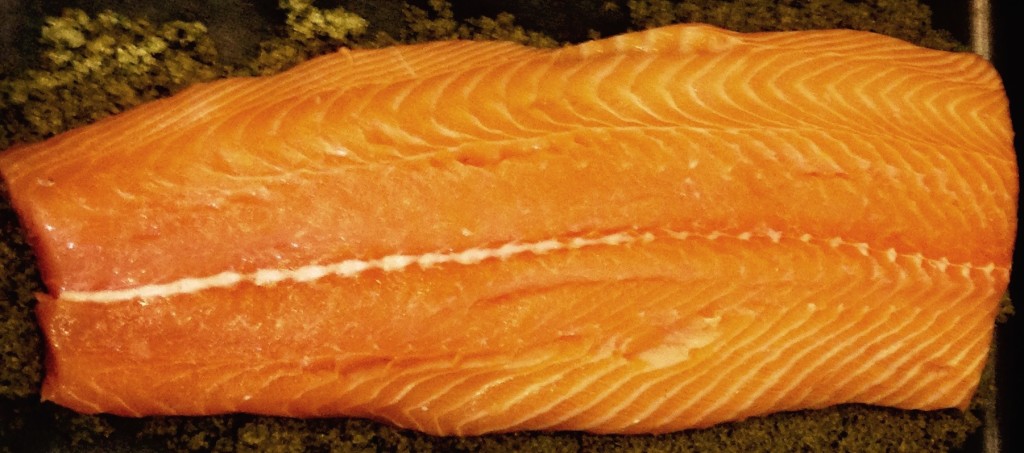Home-Cured Salmon
By Faye Dayan
One of my favourite fish to eat, and something which we have previously served at our supperclubs, is salmon, one of the most loved fish by foodies, and perhaps a fish we take for granted. But salmon is one of the most controversial fish in terms of sustainability and learning more about this had made me wonder whether I should be eating salmon as often as I do.
The recipe I would like to share with you is one which gives a whole 900 g side of salmon a very special treatment, turning it into a home-made delicacy perfect for a special occasion, and truly celebrating this fantastic fish.
Before I go onto my recipe, here are a few pointers which have helped me make the decision of which salmon to buy.
- Atlantic wild salmon now sadly have a depleted population and are no longer seen as a sustainable choice, so you won’t really see these in supermarkets or fishmongers.
- Overfishing and damage to the natural sea environment from deep trawling has led many people to believe that aquaculture (the farming of fish) is the solution. But both Greenpeace and the Marine Conservation Society stress that it is necessary to feed carnivorous farmed fish such as salmon on two to three times their weight in wild fish, and escapee farmed salmon can damage the local wild ecosystem, meaning many environmentalists oppose farmed-salmon.
- If you see an ‘organic’ label this often means the salmon is farmed. Farmed Salmon is often less expensive, meatier and available all year round and you will find it in Marks and Spencer and Waitrose and most fishmongers. The majority of salmon sold in the UK is Atlantic farmed salmon.

- If you don’t like the sound of farmed salmon, then Wild Alaskan Salmon is recommended by the Marine Stewardship Council and the Marine Conservation Society as a sustainable choice. Both Marks and Spencer and Waitrose stock Wild Alaskan salmon, but why not try your local fishmonger first – that way you can ask them questions about the salmon and where it’s sourced.
- Wild Salmon is in season only from early June until the end of August, which makes it an ingredient to look forward to and appreciate, and remember that salmon freezes well for up to four months.

- What about the difference in taste? Farmed fish is still chosen by many chefs and consumers for its rich, fatty taste. However, they contain lower levels of protein and are given pigments for coloration since they are naturally white. Alaskan Salmon in the UK is often Sockeye salmon. These fish are not as large as kings but have a deep colour, a high oil content and are very flavourful.
- Farmed salmon ranges from sustainable to unsustainable, according to the Marine Conservation Society, so it is worth talking to your fishmonger about its origin. Open net pens in Scotland and Norway are more sustainable than the drift and fixed net caught Salmon from the North East Atlantic. For more information the Marine Conservation Society’s website is a great tool http://www.mcsuk.org
Home-Cured Salmon
1 side of salmon (around 900 g). A side of Wild Alaskan Salmon is available from Waitrose or any good fishmonger. I like Steve Hatt in Angel or Sussex Fish at Borough market.
Curing mixture
200 g sea salt
200 g caster sugar
15 black peppercorns
10 g fennel
10 g coriander
1 large bunch of dill
Method
- Once you have your side of salmon, wrap it in clingfilm and freeze it overnight on a tray. (This is recommended when curing as a precautionary measure against parasites, which are more of an issue in farmed fish.)
- The next day, remove the salmon from the freezer and leave to defrost in the fridge. When it has defrosted, unwrap it and feel the salmon flesh for pin-bones, removing any that you find. Remove the skin and trim off the thinnest part of the tail end of the salmon.
- Combine the salt mix ingredients in a blender (or alternatively you could crush the seeds and peppercorns with a pestle and mortar and chop the dill finely) and put 1/3 of the mix in a deep tray. Place the salmon skin-side down on the salt mix and cover well with the remaining salt.
- Cover the salmon with clingfilm and place another tray, or plate on top, so that you can then weigh down the fish. Cans of food often make good weights for this.
- After 24 hours, drain off the water which has been released and flip over the salmon, recovering it with the salt mix and placing it once more in the fridge under a weighted tray for a further 24 hours.
- Your fish is ready! Wash off the salt and pat dry. To serve, thinly slice the salmon and serve on horseradish covered blinis. You will love the taste and sense of achievement from home curing salmon! Have a play around with different teas, spices and herbs in your curing mix too.
About Faye
Faye Dayan co-runs Supper Workshop Company, creating dining events which investigate eating trends in London, from the humble chicken to E3 foraged mugworth. Supper Workshop Company’s next event is October 11th at 4pm and will focus on Game meat. Find out more here.
Want to learn how to make more delicious food? Sign up to Rachel’s classes or to the Rachel’s Kitchen newsletter.


